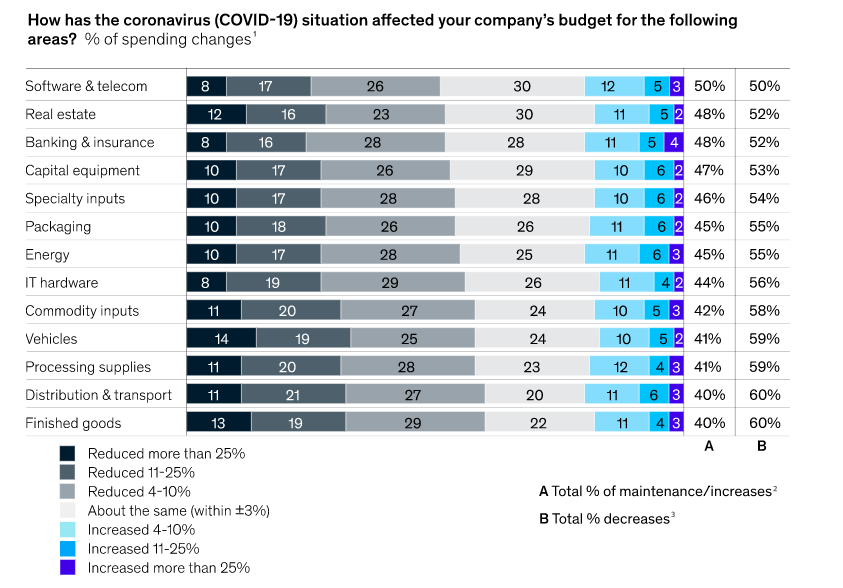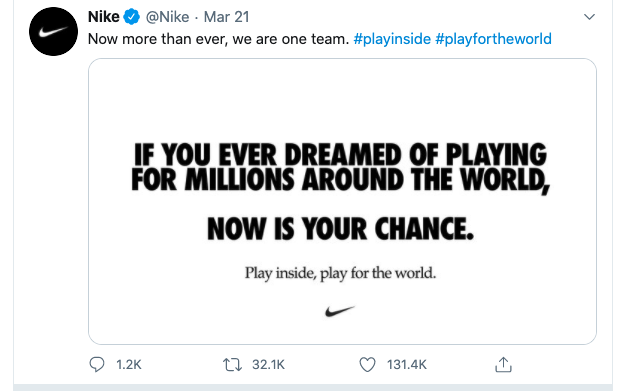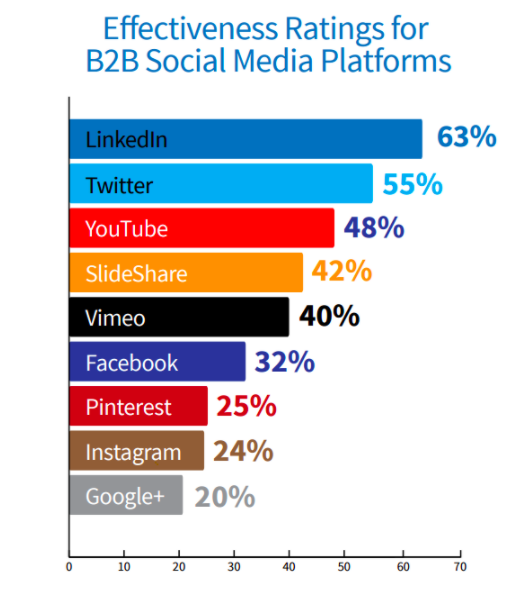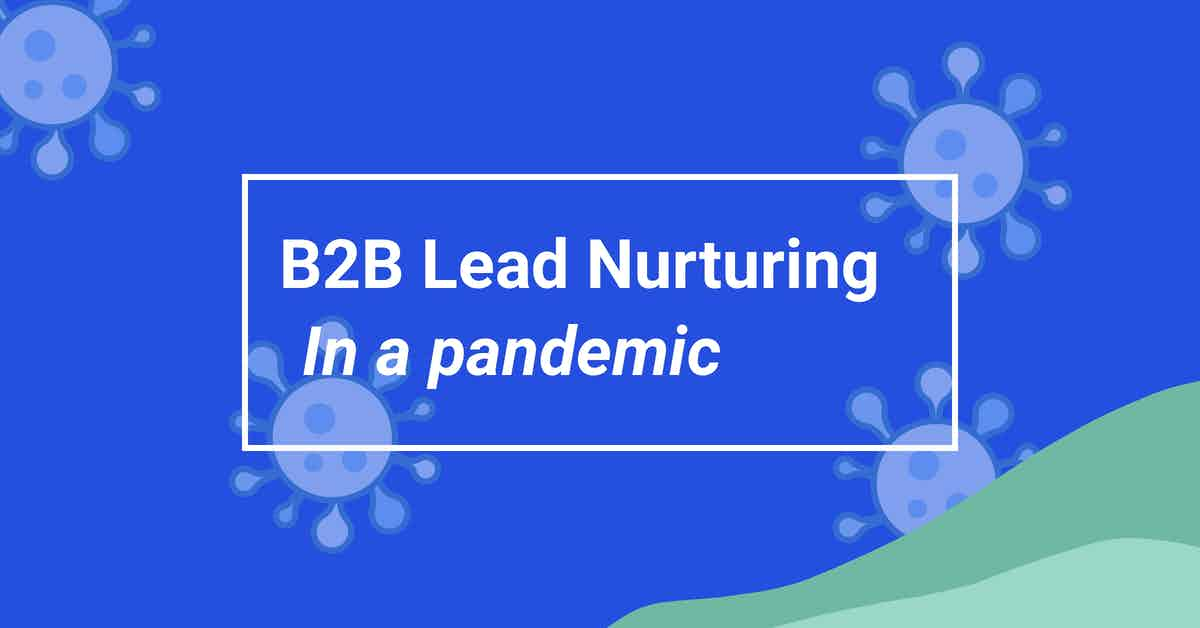Importance of B2B Lead Nurturing During Pandemic
B2B lead nurturing during pandemic is not as easy as it sounds.
The first thing you’ll need to do is educate your prospects about the dangers of the pandemic and what they can do to protect themselves from getting sick at work, school, or home.
It is still important to generate leads during a pandemic, even if you have to be more creative with your lead generation strategies. Without leads, you’ll be selling nothing.
Statistics of B2B Lead Nurturing During Pandemic
As the pandemic increased uncertainty across the globe, most businesses became more conservative when in regards to spending, instead choosing to focus on taking care of their team and customers.
In fact, nearly 50% of B2B companies cut their short-term spending in response to the pandemic. On top of that, about the same amount of businesses expect to reduce long-term budgets as well.

Source: McKinsey & Co.
Even as the economy begins to open, the threat of a COVID-19 resurgence and another dip in the stock market will keep uncertainty high and spending low.
As a result, the pandemic will impact sales cycles. According to HubSpot, the number of closed-won deals in March declined significantly compared to weekly averages in Q1.
However, an increase in engagement with marketing emails suggests that B2B decision-makers are still looking to engage with vendors.
Instead of looking solely to generate new leads and promote your company’s services, you should invest in nurturing leads. Even if your services aren’t top of mind right now, lead nurturing is about building relationships with ideal customers until they’re ready to buy in the future.
What is B2B Lead Nurturing?
B2B lead nurturing is a process of communicating with your prospects and customers toward a conversion.
Nurturing leads is the best way to ensure customer satisfaction, improve sales during a pandemic, build brand awareness, use data mining techniques like CRM or marketing automation platforms such as HubSpot for lead generation in order to get more qualified leads on BANT – budgeting & planning, authority & expertise, needs and wants, timeline.
We know that it can be hard to keep up with all of the latest information. That’s why we created LeadFuze, a lead nurturing platform for B2B marketers. It helps you nurture leads during this time of uncertainty and gives them peace of mind by providing them with relevant content tailored to their needs.
With LeadFuze, your prospects will know they are in good hands and will have access to the most up-to-date information on how to stay safe from the pandemic. They won’t need to worry about missing out on important updates or being left behind in their industry because they don’t have time for research. You can provide them with everything they need right when they need it most – even if you’re not there!
4 B2B Lead Nurturing Tips for COVID-19 Pandemic
Here are some tips to take into consideration when doing lead nurturing during a pandemic:
1 Adjust your messaging to fit the times
Successful lead nurturing campaigns deliver content that helps prospects progress through the buyer’s journey. Make sure you have identified the right hook for your audience and then your nurturing content should address common questions and concerns that come up throughout the buying process.
You might think you know your buyer’s journey, but things have changed due to consumers’ new normal.
Strategies that worked a few months ago could come off sounding tone-deaf and pushy. Too much of that, and potential partners will unsubscribe from your email list.
Instead, you should create targeted content that focuses on their needs during the pandemic.
To truly understand your customer’s decision-making process in this period, you need to revisit your buyer personas and ideal customer profiles.
Call your customers and ask what they need and what they’re going through. The primary purpose of this exercise it to reevaluate how they’re feeling in the new normal.
Conversational marketing tactics like this enable you to build stronger relationships and answer questions in real-time. To improve your connection with prospective clients, consider hiring an answering service to expand customer service hours.
In addition to connecting with your customers, you’ll gain a deeper insight into how you can connect with potential leads.
Using this information, you need to adjust your messaging to reflect your customer’s general feelings, all while supporting them throughout the decision-making process.
Throughout the pandemic, we’ve seen that marketing strategies that focus on helping others during a time of need are more successful.
At this point, actions speak louder than words. Companies like Google have pledged millions in ad credits to support small businesses, while Bank of America, Patagonia, and Apple, have pledged not to lay off any employees despite store closures.
Whether you’re performing direct outreach, calling potential clients, creating blog content, or posting on social, your messaging should be empathetic, sensitive, and positive.
Although Cadbury and Nike are B2C, you can take a page out of their playbooks. Cadbury originally planned an Easter ad campaign showing a grandfather hiding Easter eggs for his grandchildren. Unfortunately, they couldn’t run it because it’s unsafe for those age groups to have close interaction and should be social distancing.
Nike also released their # playinside and # playfortheworld campaign in March.

Source: Twitter
This message shows unity and optimism while encouraging customers to practice social distancing guidelines.
Even if your messaging doesn’t address the pandemic directly, your partners are looking for support. Focus on educating people on your product and how it can help them, and you’ll increase engagement.
2 Maintain contact through multiple touches
Lead nurturing requires strategically timed ads and emails to encourage potential partners to buy your service or product.
Even if potential partners put their projects on hold, you want to make sure that you’re at the top of their minds when business gets back to normal.
Generally speaking, prospects receive 10 marketing touches from the time they become aware of their company until they convert. However, with many companies extending timelines, the number of touches needed to convert is likely to increase.
While the path to conversion is usually pretty linear, your outreach strategy is probably all over the place right now. If so, it’s time to reevaluate your marketing funnel and touchpoints.
As the buying process slows, you’ll need to create more unique and engaging content.
At this point, you want to provide gentle reminders that keep your business at the forefront of their mind. This doesn’t have to be a direct phone call or email, but can be blogs or social media posts.
Each touchpoint is supposed to trigger an action that moves them closer to buying. The best way to effectively touch base with leads is by keeping content engaging. Now is the time to try new things like funny videos or interactive quizzes.
Reengage when necessary, but don’t try to annoy your customers. Under normal circumstances, you should be reaching out to leads once a week, but you can spread it out a bit, so it doesn’t feel like you’re breathing down their neck.
Start by touching base with them once a week, then as their timeline becomes clearer, every other week will keep your business top of mind until they’re close to making a decision.
3 Spread out channel usage
While email is most effective, extended email marketing campaigns can get annoying. You don’t want potential clients unsubscribing from your email list because they don’t see any value in your content.
To keep prospective buyers interested, you need to continuously provide interactive and engaging information.
Retargeting on other channels, like social media, display, and search, in combination with more personalized outreach, can keep you at the top of their mind while reducing the feeling of being nagged.
This kind of outreach doesn’t have to be just through advertising, either—connecting on social media is an easy way to make sure they’re up-to-date on your business and is more cost-effective.
Your posts will keep them informed on your business and can help curate brand loyalty. While LinkedIn is the most effective platform for B2B businesses, Twitter, YouTube, and SlideShare aren’t far behind.

Source: SproutSocial
Facebook and Instagram are also great for growing brand awareness because so many people use them on a daily basis.
On any of these platforms, you can share customer feedback, images of work your company has done, and even correspond directly through comments. Take the time to touch base with your marketing team to create an effective social media strategy during the pandemic.
4 Refocus on brand awareness & loyalty rather than sales
It might sound counterintuitive to de-emphasize the importance of sales, but your focus is responding to your customer needs.
Right now, customers aren’t looking to buy, but they’re still looking.
Most companies list their top marketing priority as generating leads and conversion, but during the pandemic, you need to be wary of being too aggressive.
Instead, focus on creating educational content that will keep your customer base interested in what you have to offer.
Consumers are likely to remember how your business reacted throughout the pandemic, and their engagement now will be indicative of conversion when things get back to normal.
Rather than measuring success based on sales, track brand awareness and engagement with your content. While your call to action can be softer, they should easily remember your company name and want to work with you.
You can build brand loyalty by providing excellent customer service, responding to the crisis proactively, supporting your partners where they need it, and simply taking care of your employees.
Lead Nurturing: Improve Sales During and After the Pandemic
While the sales cycle has slowed down and spending has decreased during the COVID-19 pandemic, nurturing leads has become more important.
To successfully nurture leads in this unprecedented time, you need to adjust messaging to be more empathetic and optimistic.
You’ll need to keep in contact with prospective buyers over an extended timeline. To do so, you will need to create more content that will keep your business at the forefront of their mind, even if projects are put on hold. You may need to reach out more before they convert.
Spread out content over several channels, including email, phone, social media, display, and search, in order to grow brand loyalty and keep clients up to date on your business.
Connecting on social media is a cost-effective way to keep your company fresh in their head for when business resumes as normal.
Finally, you need to refocus on brand awareness. The cold hard truth is that a lot of companies aren’t buying at the moment. But they will be. Even if your conversion rates are low now, you need to continue to invest in building customer relationships.
Conclusion
B2B lead nurturing during pandemic is a necessity for any company, and the best way to do so is by implementing BANT. Therefore, CRM or marketing automation platforms like LeadFuze are necessary in order to get more qualified leads on your budgeting & planning needs, authority & expertise wants, timeline hassles.
If you have been looking at COVID-19 with trepidation, it is important to take action. It’s easy for a business to get caught up in the hype of COVID-19 and not put work into improving your lead generation or customer retention rates on top of just trying to make money now.
However, we can’t wait around idly while companies lose profits because they are too busy with sales to worry about lead nurturing. This is a time for action, not just words.
Want to help contribute to future articles? Have data-backed and tactical advice to share? I’d love to hear from you!
We have over 60,000 monthly readers that would love to see it! Contact us and let's discuss your ideas!
